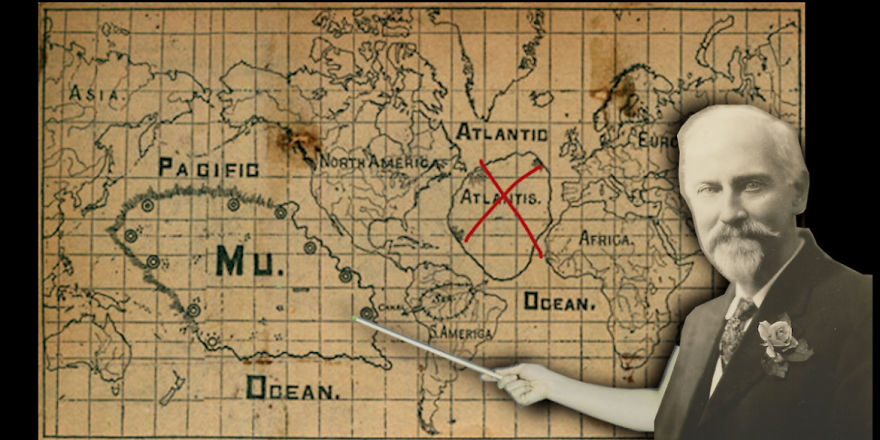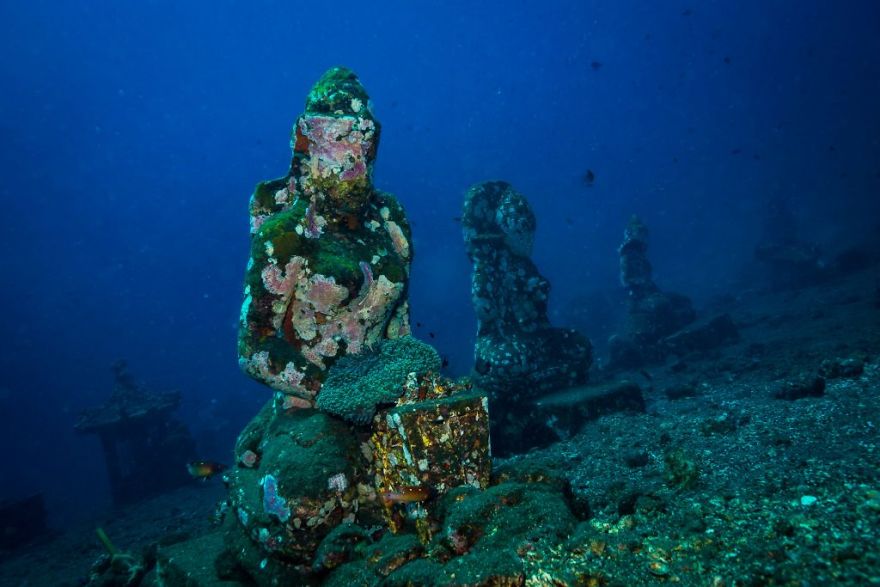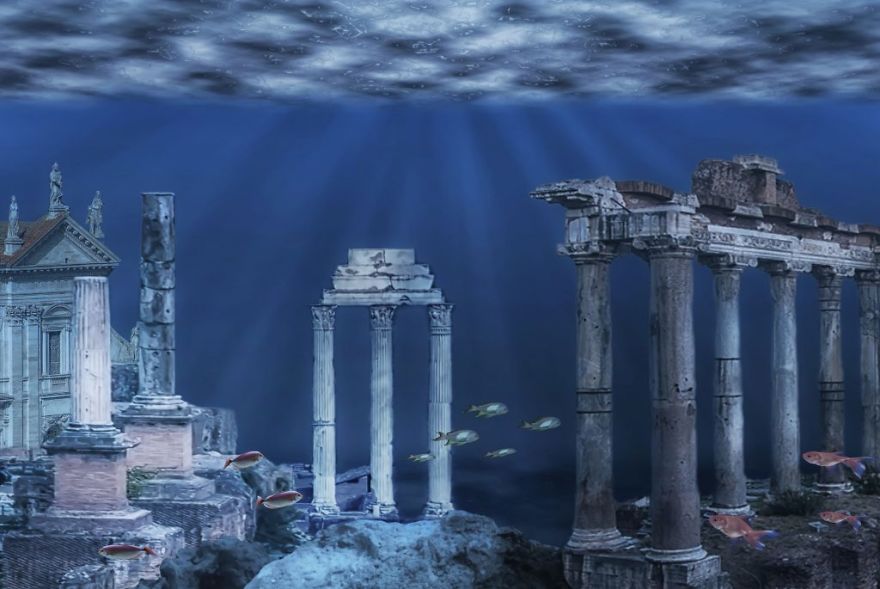Quick, think of a long lost landmass that was once the home of a thriving civilization that has since been lost to sink beneath the sea. Are you thinking of Atlantis? Sorry, that’s incorrect. We were looking for “Lost Continent Mu”. “What’s Mu”, you ask?
Mu is the other long lost landmass that has sunk beneath the sea. We owe our understanding of this misunderstood place to James Churchward (1851-1936), a British writer, engineer, and fisherman. Exactly what Churchward learned, and how he learned it, are pretty…out there.
To start, let me just say that Churchward wasn’t some crackpot fisherman who lived on the docks. He was actually fairly accomplished. Born in England in 1851, he worked as a fisherman, was a soldier in British India, worked as a tea planter in Sri Lanka, and eventually settled in the United States. He held a patent for armor plating, developed with his expertise as an engineer, that would be used in World War I.
After winning a lawsuit regarding that patent’s infringement he retired, living the rest of his life on his Lake Wononskopomuc estate in Lakeville, Connecticut. After all of this, in 1926 at the age of 75, Churchward published the book “The Lost Continent of Mu: Motherland of Men”.
An Indian Priest and The Lost Continent of Mu
In his book, Churchward claimed that during his service in India during the 1870s that he befriended a high-ranking temple priest. The priest had told Churchward of ancient tablets he possessed, written in a language that only three people in all of India could read, the priest being one of them. Churchward, intrigued, convinced the priest to teach him the language so he could understand the ancient tablets himself.
When he finally read the tablets they revealed to him the existence of the land of Mu, an ancient continent that existed in the middle of what we now call the Pacific Ocean. Churchward claimed the landmass was 5000 miles east to west, and 3000 miles north to south, making it bigger than South America.
Mu was populated by the Naacal people, who lived there from 50,000-12,000 years ago. Their population, at its peak, was 64 million across seven cities. These people were divided into ten tribes, all living under one government and one religion.
A major calamity occurred 12,000 years ago that sank the continent, and the civilization along with it, into the Pacific Ocean. Churchward claims that the ancient civilizations of India, Babylon, Egypt, Persia, the Maori, and the Mayas were merely the remnants of Mu’s colonies.
Churchward believed that the ancient origin stories of these people pointed toward the existence of a prior common civilization. For example, the ancient people of Burma believed their ancestral home was “to the east”, while the Mayans believed theirs to be “to the west”. The only place this could be, according to Churchward, was the sprawling land of Mu that has since sunk beneath the Pacific.
What Was The Land of Mu Like?
According to the ancient Indian tablets, the land of Mu was a sprawling landmass perfectly built for ancient humans to thrive. Sprawling plains were complemented by wide rivers and a plethora of estuaries, making access to water for agriculture extremely easy. Rolling hills encircled large bays, and the people lived extremely prosperously by fishing and farming.
Because of these facts given to him by the ancient tablets, Churchward believed that the land of Mu was what the Bible was referring to when it describes the Garden of Eden. In fact, Churchward would claim that Moses was actually trained by an ancient Naacal Brotherhood in Egypt. Mu was ruled by a king, whom the people referred to by the title “Rah”. This is why, according to Churchward, the ancient Egyptians called their sun god Ra.
The Land of Mu Was Advanced and Then It Sank
Churchward claimed that the Naacal people of Mu were much more advanced than one would expect for a civilization over 12,000 years old. In some ways, he would claim, they were more advanced than we are. Churchward points to the megalithic structures of the remnant civilizations as evidence. Things like the Mayan pyramids, the giant Easter Island head sculptures, and ancient megalithic structures found in New Zealand.
About 12,000 years ago is when, according to Churchward, the calamity occurred. You see, the land of Mu actually started below the sea. It breached the surface over 50,000 years ago when volcanic activity beneath the surface filled caverns in the belly of Mu with gases, lifting the massive continent out of the sea.
But then, those same kinds of volcanic activities, combined with earthquakes and tectonic activity, practically obliterated Mu, and then it sank to the bottom of the Pacific.
In the end, all we have to go off of is Churchward’s word. After all, the tablets he read are long lost, and even if they did exist, it’s unlikely there would be anyone who could read them (remember, only four people in the world could read them at the time, including Churchward). Not one for hoaxes, Churchward lived an honest and journeyed life, and he chose to live out the last of his years writing about his convinced belief on the existence of Mu.
Read more about “The Lost Continent MU”
More info: globalbizarre.com
302views
Share on Facebook







2
2